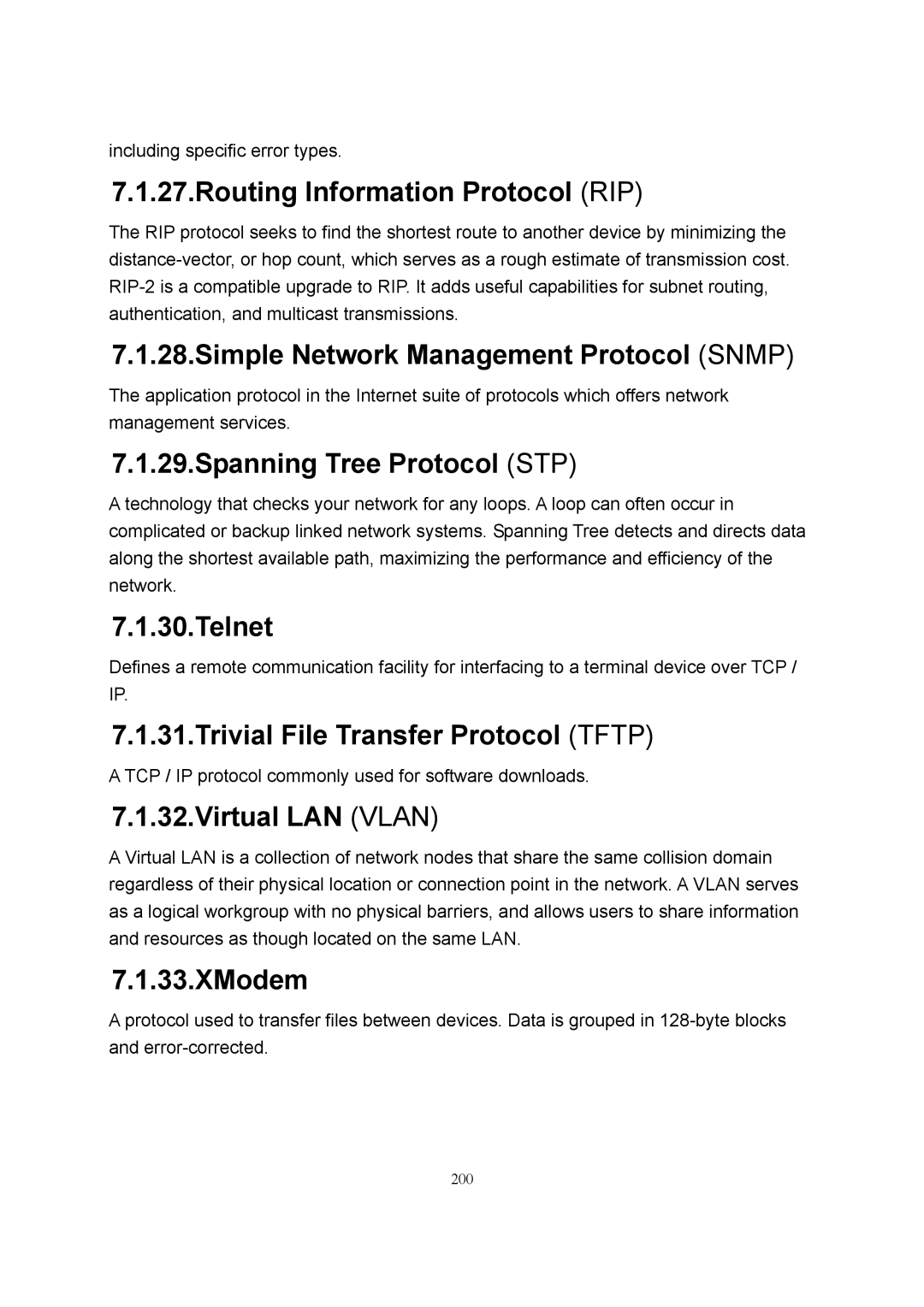including specific error types.
7.1.27.Routing Information Protocol (RIP)
The RIP protocol seeks to find the shortest route to another device by minimizing the
7.1.28.Simple Network Management Protocol (SNMP)
The application protocol in the Internet suite of protocols which offers network management services.
7.1.29.Spanning Tree Protocol (STP)
A technology that checks your network for any loops. A loop can often occur in complicated or backup linked network systems. Spanning Tree detects and directs data along the shortest available path, maximizing the performance and efficiency of the network.
7.1.30.Telnet
Defines a remote communication facility for interfacing to a terminal device over TCP / IP.
7.1.31.Trivial File Transfer Protocol (TFTP)
A TCP / IP protocol commonly used for software downloads.
7.1.32.Virtual LAN (VLAN)
A Virtual LAN is a collection of network nodes that share the same collision domain regardless of their physical location or connection point in the network. A VLAN serves as a logical workgroup with no physical barriers, and allows users to share information and resources as though located on the same LAN.
7.1.33.XModem
A protocol used to transfer files between devices. Data is grouped in
200
